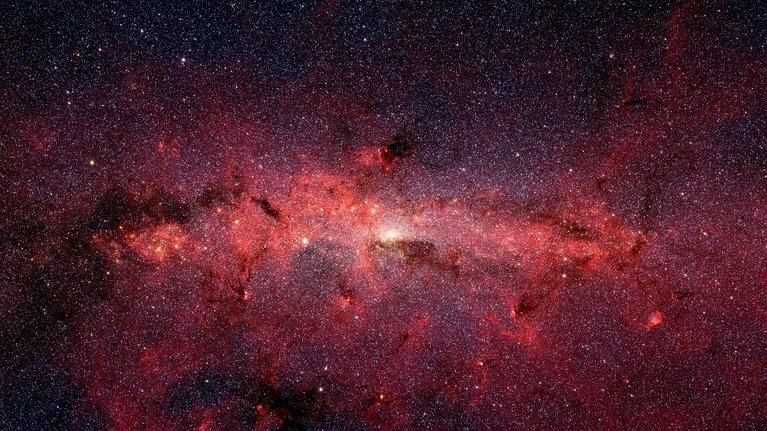Night skies captured at Northumberland coastal landmarks
- Published
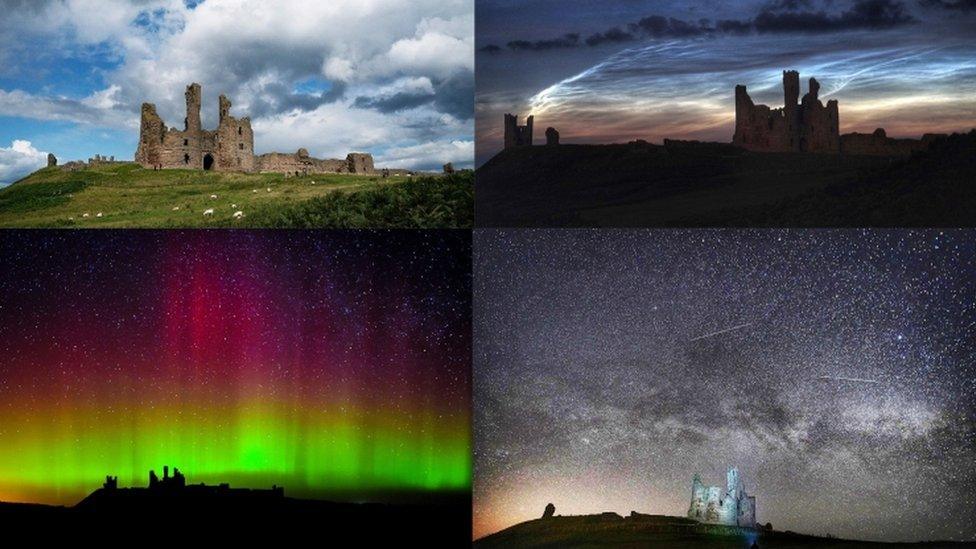
Dunstanburgh Castle (clockwise from top left) in daylight, with noctilucent clouds, the Milky Way and the Northern Lights
A photographer went out night after night to capture the celestial light shows of the Northumberland coast.
Owen Humphreys of PA set himself the task of snapping landmarks with starkly differently skies - noctilucent clouds, the Milky Way and the Northern Lights.
The conditions had to be right for his nocturnal outings, with him having to pull a few all-nighters.
And here are the results - many took up to seven hours waiting for the Northern Lights to appear.

The Bathing House at Howick, on the Northumberland coast - built in the 14th Century on the edge of a cliff
Mr Humphreys said: "For the Northern Lights you need no moon or as little as possible - then a clear sky.
"And then, even with those, you will need some kind of solar storm, such as a coronal mass injection from the sun, or in simple terms, an explosion from the sun's surface which reacts with the earth's magnetic field."
He chose The Sycamore Gap Tree as one of his locations. It stands in a dramatic dip in the landscape and is one of the most photographed trees in the country.
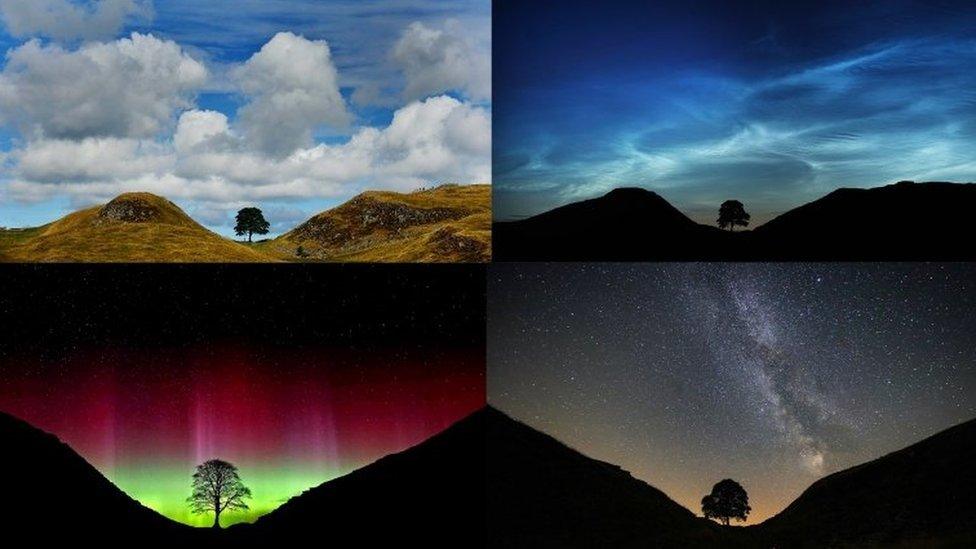
The Sycamore Gap Tree or Robin Hood Tree is a sycamore near Hadrian's Wall near Crag Lough in Northumberland
He said photographing The Milky Way was "probably the easiest", but added: "You still have to do your homework on times and position in the sky, which can easily be done using apps."
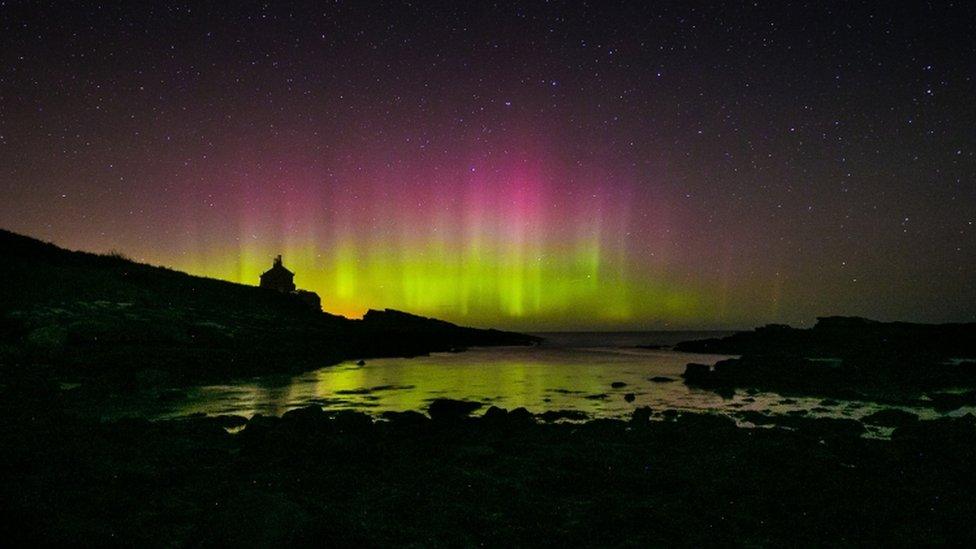
The Bathing House lit up by the Northern Lights
The third night sky he focused on was noctilucent cloud formations.
He explained: "These, to the eye, are bright white clouds on the horizon in the middle of the night and are the highest clouds in the Earth's atmosphere, 83km (51.5 miles).
"These clouds can be very bright and make some great shapes but you really do have to be a bit of a night owl to capture them."
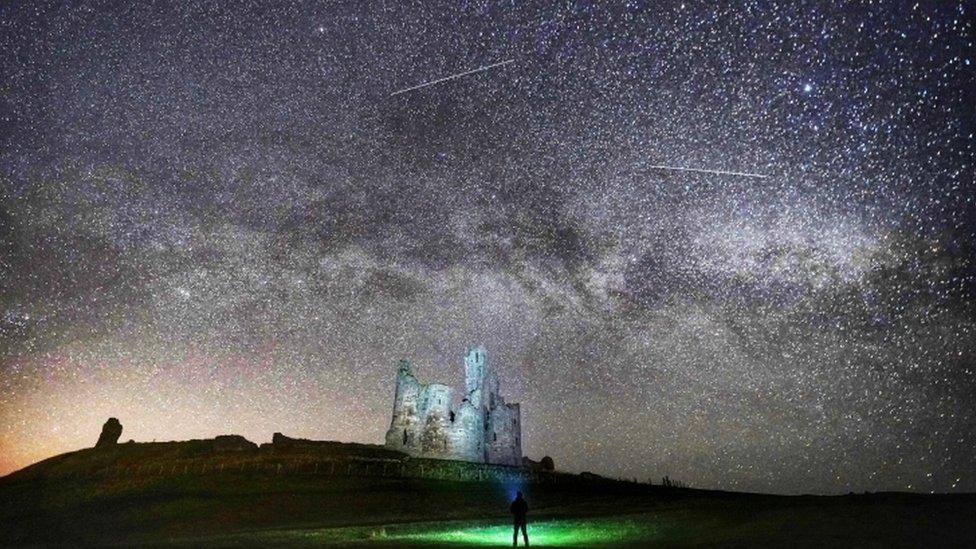
Dunstanburgh Castle with the Milky Way behind
He added: "Many, many hours have been spent standing in fields or on the coast, sometimes six to seven hours waiting to see if the Northern Lights appeared."
- Published21 January 2016
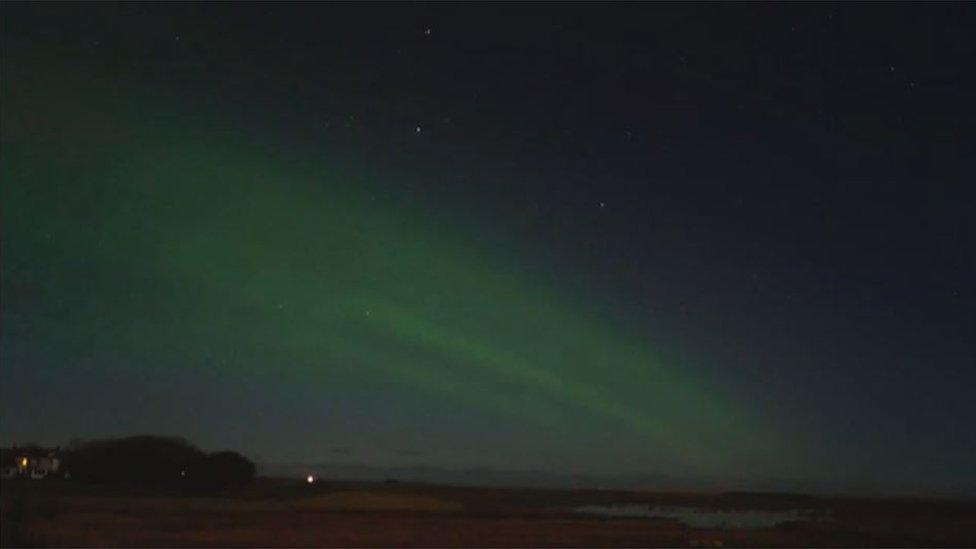
- Published27 November 2017
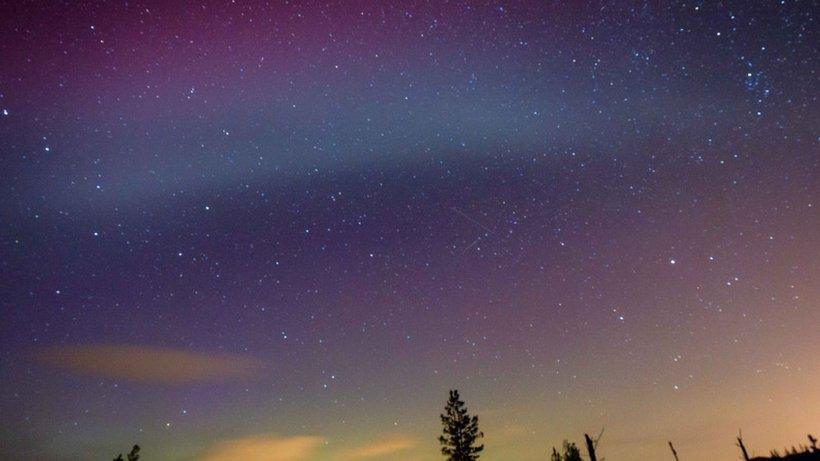
- Published25 June 2014
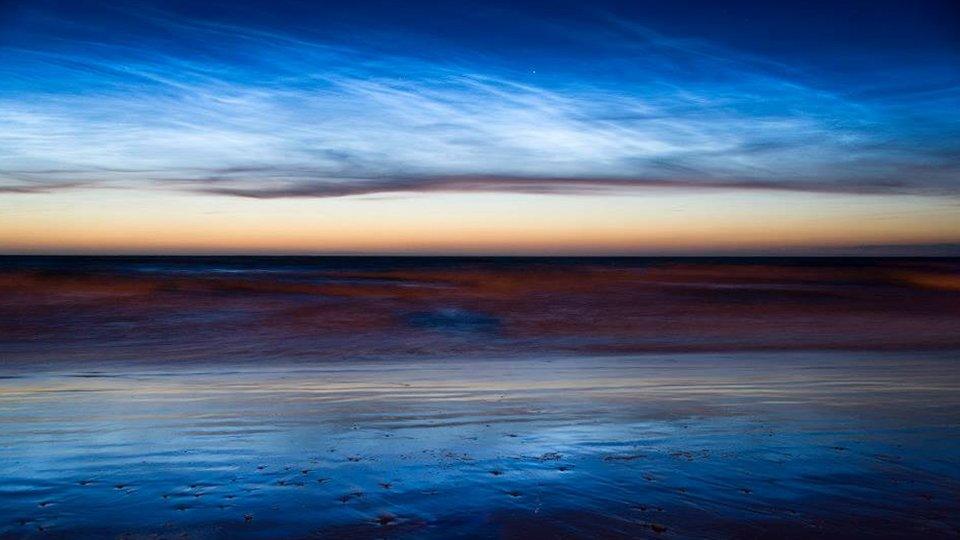
- Published30 July 2014
